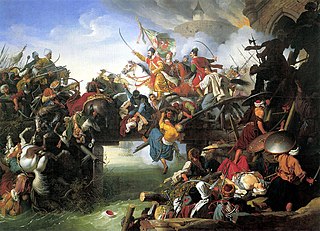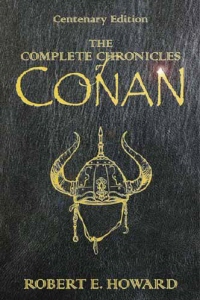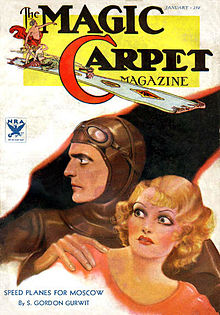
Conan the Barbarian is a fictional sword and sorcery hero who originated in pulp magazines and has since been adapted to books, comics, films, television programs, video games, and role-playing games. Robert E. Howard created the character in 1932 for a series of fantasy stories published in Weird Tales magazine.

Suleiman I, commonly known as Suleiman the Magnificent in Western Europe and Suleiman the Lawgiver in his Ottoman realm, was the longest-reigning sultan of the Ottoman Empire from 1520 until his death in 1566. Under his administration, the Ottoman Empire ruled over at least 25 million people.

Red Sonja is a fictional sword and sorcery comic-book superheroine created by writer Roy Thomas and artist Barry Windsor-Smith for Marvel Comics in 1973, partially inspired by Robert E. Howard's character Red Sonya of Rogatino.

The siege of Vienna, in 1529, was the first attempt by the Ottoman Empire to capture the capital city of Vienna, Austria, Holy Roman Empire. Suleiman the Magnificent, sultan of the Ottomans, attacked the city with over 100,000 men, while the defenders, led by Niklas Graf Salm, numbered no more than 21,000. Nevertheless, Vienna was able to survive the siege, which ultimately lasted just over two weeks, from 27 September to 15 October, 1529.

The siege of Szigetvár or the Battle of Szigeth was a siege of the fortress of Szigetvár, Kingdom of Hungary, that blocked Sultan Suleiman's line of advance towards Vienna in 1566. The battle was fought between the defending forces of the Habsburg monarchy under the leadership of Nikola IV Zrinski, former Ban of Croatia, and the invading Ottoman army under the nominal command of Sultan Suleiman the Magnificent.

"The Frost-Giant's Daughter" is one of the original fantasy short stories about Conan the Cimmerian, written by American author Robert E. Howard.
"The Hyborian Age" is an essay by Robert E. Howard pertaining to the Hyborian Age, the fictional setting of his stories about Conan the Cimmerian. It was written in the 1930s but not published during Howard's lifetime. Its purpose was to maintain consistency within his fictional setting.

The Classical Age of the Ottoman Empire concerns the history of the Ottoman Empire from the conquest of Constantinople in 1453 until the second half of the sixteenth century, roughly the end of the reign of Suleiman the Magnificent. During this period a system of patrimonial rule based on the absolute authority of the sultan reached its apex, and the empire developed the institutional foundations which it would maintain, in modified form, for several centuries. The territory of the Ottoman Empire greatly expanded, and led to what some historians have called the Pax Ottomana. The process of centralization undergone by the empire prior to 1453 was brought to completion in the reign of Mehmed II.

The Conquering Sword of Conan is the third of a three-volume set collecting the Conan the Barbarian stories by author Robert E. Howard. It was originally published in 2005, first in the United States by Ballantine/Del Rey under the present title and thereafter in 2009 by Wandering Star Books in the United Kingdom under the title Conan of Cimmeria: Volume Three (1935–1936). The Science Fiction Book Club subsequently reprinted the complete set in hardcover. The set presents the original, unedited versions of Howard's Conan tales. This volume includes short stories as well as such miscellanea as drafts, notes, and maps, and is illustrated by Greg Manchess.

Conan the Swordsman is a collection of seven fantasy short stories and associated pieces by writers L. Sprague de Camp, Lin Carter and Björn Nyberg featuring Robert E. Howard's sword and sorcery hero Conan the Barbarian. It was first published in paperback by Bantam Books in August 1978, and reprinted in 1981. Later paperback editions were issued by Ace Books. The first hardcover edition was published by Tor Books in December 2002. The first British edition was issued by Sphere Books in 1978. The book has also been translated into Italian and French. It was later gathered together with Conan the Liberator and Conan and the Spider God into the omnibus collection Sagas of Conan.

Bêlit is a character appearing in the fictional universe of Robert E. Howard's Conan the Barbarian. She is a pirate queen who has a romantic relationship with Conan. She appears in Howard's Conan short story "Queen of the Black Coast", first published in Weird Tales #23. She is the first substantial female character to appear in Howard's Conan stories. Partly thanks to her substantial appearance in the Marvel Comics' Conan series, the character is recognized as being Conan's "true love".
The Hungarian Civil War or campaign of 1527–1528 was launched by Ferdinand I, Archduke of Austria and King of Hungary and Bohemia and his Hungarian followers against the Ottoman Turks. Following the Battle of Mohács, the Ottomans were forced to withdraw as events elsewhere in their now massive Empire required the Sultan's attention. Seizing upon their absence, Ferdinand I attempted to enforce his claim as King of Hungary. In 1527 he drove back the Ottoman vassal John Zápolya and captured Buda, Győr, Komárom, Esztergom, and Székesfehérvár by 1528. Meanwhile, the Ottoman Sultan, Suleiman the Magnificent, took no action at this stage despite the pleas of his vassal.

The Habsburg monarchy and the Ottoman Empire waged a series of wars on the territory of the Kingdom of Hungary and several adjacent lands in Southeastern Europe from 1526 to 1568. The Habsburgs and the Ottomans engaged in a series of military campaigns against one another in Hungary between 1526 and 1568. While overall the Ottomans had the upper hand, the war failed to produce any decisive result. The Ottoman army remained very powerful in the open field but it often lost a significant amount of time besieging the many fortresses of the Hungarian frontier and its communication lines were now dangerously overstretched. At the end of the conflict, Hungary had been split into several different zones of control, between the Ottomans, Habsburgs, and Transylvania, an Ottoman vassal state. The simultaneous war of succession between Habsburg-controlled western "Royal Hungary" and the Zápolya-ruled pro-Ottoman "Eastern Hungarian Kingdom" is known as the Little War in Hungary.

The Complete Chronicles of Conan: Centenary Edition is a collection of fantasy short stories written by Robert E. Howard featuring his sword and sorcery hero Conan the Barbarian. The book was published in 2006 by Gollancz and is an omnibus of their earlier collections The Conan Chronicles, Volume 1: The People of the Black Circle and The Conan Chronicles, Volume 2: The Hour of the Dragon, though the stories are rearranged. The collection is edited by Stephen Jones and was issued to celebrate the centenary of Howard's birth. Most of the stories originally appeared in the magazines The Phantagraph, Weird Tales, Super-Science Fiction, Magazine of Horror, Fantasy Fiction, Fantasy Magazine and The Howard Collector.

The siege of Buda ended with the capture of the city of Buda, the historical capital of the Kingdom of Hungary, by the Ottoman Empire, leading to about 150 years of Ottoman rule in parts of Hungary. The siege, part of the Little War in Hungary, was one of the most important Ottoman victories over the Habsburg monarchy during Ottoman–Habsburg wars in Hungary and the Balkans.

Nicholas, Count of Salm was a German soldier and an Imperial senior military commander. His greatest achievement was the defense of Vienna during the first siege by the Ottoman Empire in 1529.

The siege of Kőszeg or siege of Güns, also known as the German campaign was a siege of Kőszeg in the Kingdom of Hungary within the Habsburg Empire, that took place in 1532. In the siege, the defending forces of the Austrian Habsburg monarchy under the leadership of Croatian Captain Nikola Jurišić, defended the small border fort of Kőszeg with only 700–800 Croatian soldiers, with no cannons and few guns. The defenders prevented the advance of the Ottoman army of over 100,000 toward Vienna, under the leadership of Sultan Suleiman the Magnificent and Pargalı Ibrahim Pasha.

The Sultans Trail is a long-distance footpath from Vienna to Istanbul. It is 2,400 kilometres (1,500 mi) long. The path passes through Austria, Slovakia, Hungary, Croatia, Serbia, Romania, Bulgaria, East Macedonia and Thrace in northern Greece, and Turkey.

The siege of Temesvár was a military conflict between the Habsburg monarchy and the Ottoman Empire in 1552. The siege resulted with a decisive Ottoman victory and Temesvár came under Ottoman control for 164 years.


















